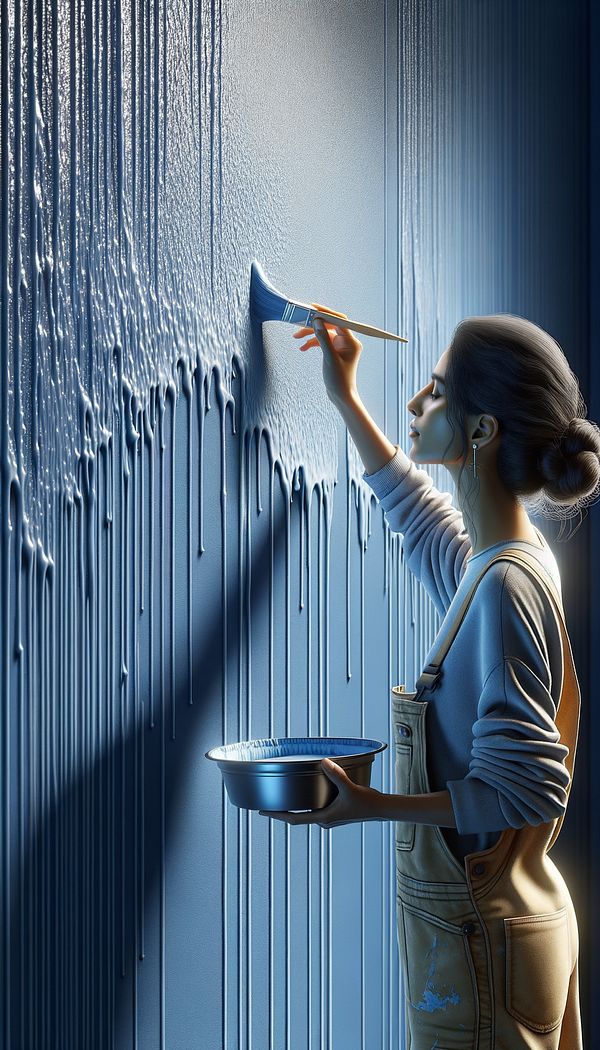What is Glaze?
Glaze is a coating applied to surfaces for decorative or functional purposes.
Description
In the world of interior design, glaze refers to a semi-transparent coating that is applied to various surfaces, such as walls, furniture, ceramics, and even textiles. This versatile finish can enhance the aesthetic appeal of an object or space by adding depth, texture, and color variation. Glazes can be applied over painted or raw surfaces and are often used to create antiqued or distressed looks, making them a favorite among designers aiming for a vintage or rustic ambiance.
Beyond aesthetics, glazes serve a functional purpose by providing an additional layer of protection. This protective coating helps to preserve the underlying material, making it more resistant to wear, tear, and moisture. In ceramics, for example, a glaze can seal the porous surface of the clay, making it waterproof and more durable.
The process of applying a glaze can vary depending on the surface and the desired effect. It may involve brushing, spraying, or even dipping. The choice of glaze—its opacity, color, and composition—is crucial in achieving the intended finish. Experimentation with different types of glazes and application techniques is a common practice among interior designers and artisans, as it opens up a wide range of creative possibilities.
Usage
A classic example of glaze application in interior design is the use of a glaze finish over a painted wall to create a nuanced, multi-dimensional look. This technique can add depth and character to a room, making it appear more dynamic and interesting. In furniture restoration or creation, glazes are applied to wood surfaces to enhance the grain pattern or to artificially age new pieces, giving them a vintage feel. Ceramics, from tiles to decorative objects, often feature glazes that not only add color and shine but also make them functional by sealing their surfaces.
FAQs
-
Can glaze be applied over any surface?
While glaze can be applied to a wide range of surfaces, the suitability and preparation method may vary depending on the material. Some surfaces may require priming or a base coat for the glaze to adhere properly.
-
Is glazing the same as painting?
No, glazing and painting are different techniques. Painting involves applying a coat of paint to cover and color a surface, while glazing is the application of a transparent or semi-transparent layer over a base layer (often paint) to add depth and visual interest.
-
How long does it take for glaze to dry?
The drying time of a glaze can vary significantly depending on its composition and the conditions of the application area. It generally takes longer to dry than a standard paint due to its nature.
-
Can I glaze a piece of furniture myself?
Yes, with the right tools and knowledge about the glazing process and techniques, you can apply glaze to furniture or other objects. It's advisable to practice on a small, inconspicuous area first.
-
Does a glazed surface require maintenance?
Yes, although a glaze provides an additional layer of protection, it might still require regular maintenance, such as cleaning or re-application over time, to maintain its appearance and protective qualities.
-
Can I change the color of a glaze?
Yes, glazes come in a variety of colors, and custom colors can often be mixed to achieve the desired shade. It's important to test the color on a small sample before applying it over a large area.
Practical Application
To apply glaze effectively, start with a clean, smooth surface. Apply a base coat if necessary, and let it dry completely. Then, using a brush, roller, or spray, apply the glaze in a thin, even layer. Experiment with different tools and movements to create textures or patterns. After applying, allow the glaze to dry thoroughly. You may want to add a protective topcoat to seal the glaze, depending on the project and the level of protection needed. Always follow the manufacturer's instructions for the best results.
-
Furniture Types599 articles
-
Decorative Techniques322 articles
-
Materials & Textiles360 articles
-
Textiles & Upholstery252 articles
-
Wall Treatments & Finishes157 articles
-
Dutch DresserA Dutch Dresser is a type of sturdy and practical furniture piece consisting of shelves above and drawers or cupboards below.
-
Lining PaperLining paper is a type of wallpaper used to create a smooth surface for painting or the application of decorative wallpaper.
-
DraggingDragging is a decorative painting technique used to create a striated effect on walls or furniture.
-
Bungalow StyleBungalow Style refers to a compact, single-story house design with distinct architectural features.
-
Cross StretcherA cross stretcher is a structural element used in furniture design for added support and stability.
